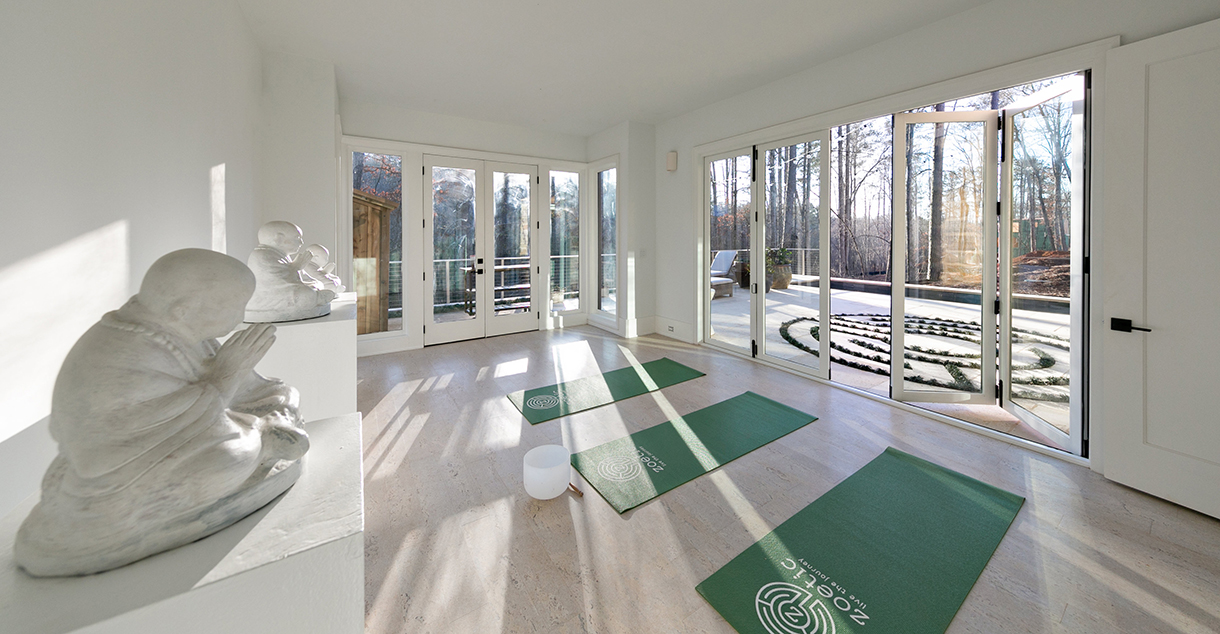
Living Well
Residential sites are distinguishing themselves by catering to whole health—body, mind, and soul.
BY JORGE S. ARANGO
Manhattan-based architecture firm CookFox has been on the forefront of environmentally responsible buildings since its founding in 2003, becoming the first to design three LEED Platinum–certified projects in New York City. The firm’s Lucida apartment building was the first residence on the Upper East Side to achieve LEED certification. Built with nontoxic, ecologically responsible materials and energy-efficient systems, the residential site also offers a spa, quiet rooms, and filtered air pumped throughout. It was one of the earliest buildings to respond to “an understanding that [constructing with] health awareness improves the lives of residents,” says CookFox senior associate Luca Baraldo. “Material science has improved, showing that healthier materials and people’s connection to nature promote stress reduction.”
A report last year by the Global Wellness Institute found that $4.2 trillion is spent on wellness each year (everything from vitamins and sleep apps to athletic wear and workout classes). The wellness lifestyle real estate sector represented $134 billion in 2017 and various movements—including New Urbanism, the biophilic hypothesis, spiritually rooted design, and green and sustainable building—have converged, spawning a host of new guidelines and certifications. The International WELL Building Institute upholds the WELL Community Standard and WELL v2 paradigm to support and advance human health through the built environment. The International Living Future Institute has developed a regenerative performance standard called the Living Building Challenge to ensure built spaces give more resources than they take.
The emergence of “agrihoods” includes the 1,200-acre Serenbe in Chattahoochee Hills, Georgia. An early adopter of on-site organic farming as integral to the community, “Serenbe is built on the biophilic model that connects people with nature and each other,” says its founder and CEO Steve Nygren. “By preserving more than 70 percent of the natural green space and building in dense, walkable clusters, we see incredible wellness outcomes.”
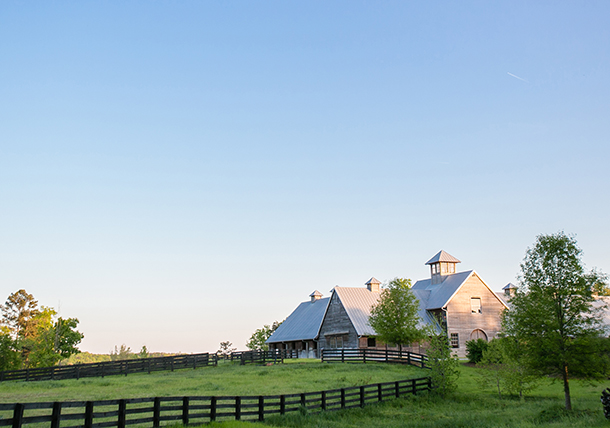
Courtesy Serenbe
The horse stables at Serenbe Mado Hamlet.

Courtesy Serenbe
Swan Ridge home adjacent to the farm at Serenbe Mado Hamlet.
Utopian Ideals
Master-planned community Serenbe is the brainchild of Steve Nygren, whose culinary background (he owned more than 35 beloved restaurants in Atlanta and the Southeast) explains its farm-to-table ethos. Their comprehensive vision, called “a Sonoma for the New South” by The New York Times, is a holistic approach to healthy living, where all homes are Earthcraft- certified (a Southeastern green/healthy standard); waste water is treated on-site with a natural filtration system; streams run throughout the community; 15 miles of nature trails encourage residents to get outdoors and exercise; lawns are discouraged in favor of organic and medicinal plant landscaping; an organic farm supplies various eateries with ingredients; and a dark-skies initiative requires downlighting so you can see the stars. Wilderness surrounds each community cluster—the latest being Mado Hamlet, where 87 houses are under construction or completed and 80 more will come online this year. Expansion begins soon on another 170 homes that will become available this fall.
Serenbe Mado Hamlet, Chattahoochee Hills, Georgia
DEVELOPER: Serenbe Development
PRICE RANGE: 1-bedrooms from $292,000 to $5 million custom homes
DELIVERY: Fall 2019
WELLNESS AMENITIES: Goat yoga and aerial yoga; stone labyrinth; meditation room; gym with indoor cycling studio and Peloton bikes; spa with infrared sauna; swim club with multiple pools, including a heated multi-lane lap pool; 15 miles of nature trails for forest bathing, running, hiking, mountain biking, and horseback riding. serenbe.com
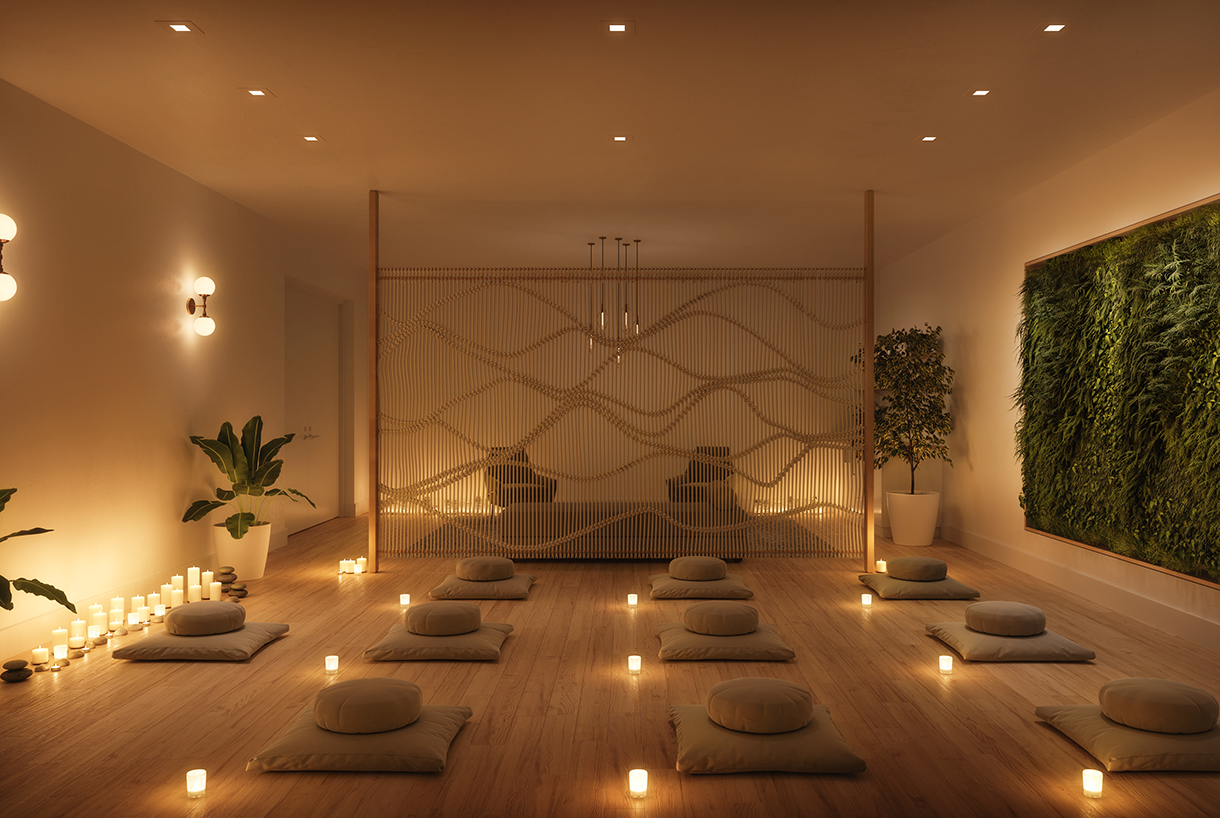
Courtesy Gramercy Square
The meditation room at Gramercy Square.
New York–based developer David Bistricer believes wellness amenities in real estate will surpass the fitness craze that fed earlier luxury-building must-haves like gyms and pools. “People need people,” he says of the holistic view that includes the importance of sociability. Gathering areas and green spaces become important. In addition to a MNDFL-brand meditation studio, Bistricer’s four-building Gramercy Square project is fully loaded with landscaped private gardens, walking paths, and a rooftop terrace with a kitchen and outdoor lounges. “All these certification programs evolve and become stricter, providing community planners and municipalities a way to set codes,” notes CookFox’s Baraldo. “What was the original LEED Platinum standard for energy efficiency is now a code requirement in New York.”
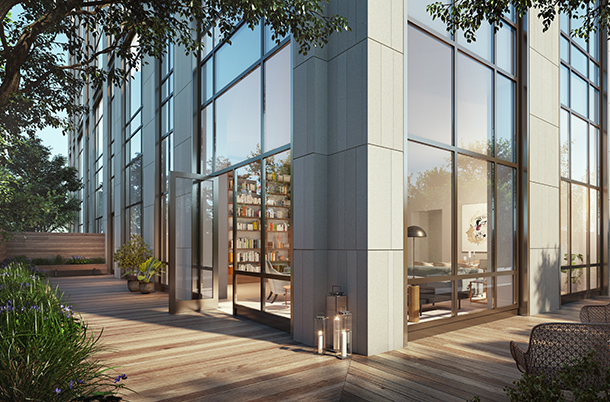
Courtesy Gramercy Square
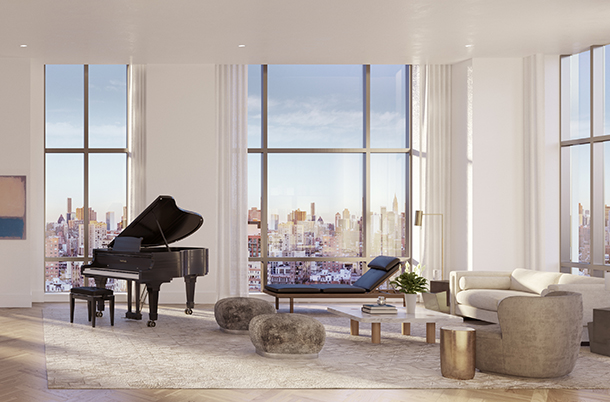
Courtesy Gramercy Square
Gramercy Square, New York
DEVELOPERS: Chetrit Group; Clipper Equity
PRICE RANGE: Studios from $1.215 million to 4-bedrooms for $5.53 million
DELIVERY: Now
WELLNESS AMENITIES: 20,000-square-foot landscaped garden space; 18,000-square-foot La Palestra private amenities club that includes a pool, MNDFL-branded meditation room, beauty bar, two-level fitness center, and circadian rhythm lighting. gramercysquare.com




